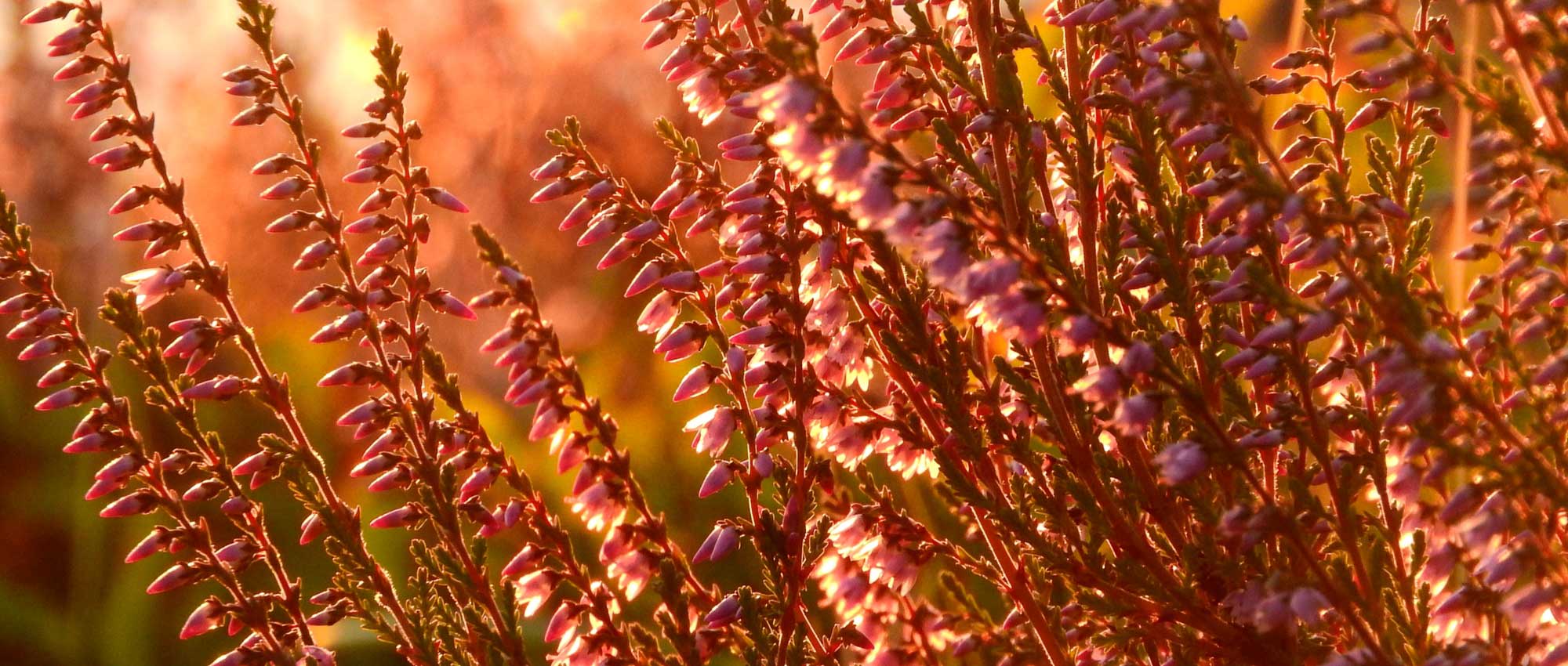
Heathers: planting, pruning and care
Contents
Heathers in a nutshell
- Heather is THE foolproof plant that can thrive in all difficult situations
- It offers an abundant flowering of small white, purple, or pink bells
- Heather can be planted at the edge, in rockeries, or in pots
- Its dense and evergreen foliage prevents any weeds from coming through
- By alternating the varieties, you can enjoy staggered flowerings throughout the year
A word from our Expert
Heather is a rather low-growing plant with fine foliage that bears a multitude of small bell-shaped flowers in pink or white. Winter heather, from the genus Erica, adds colour to the garden at a time when flowers are scarce. In contrast, summer heather, Calluna vulgaris, offers a summer flowering that can last until mid-autumn, but the plant remains decorative in winter due to its evergreen foliage. It is possible to alternate varieties to enjoy their flowering throughout the year! They are generally low plants, perfect for borders, rockeries, or to dress the front of flower beds… However, there are also shrubby heathers, such as Erica arborea, which flowers in spring and can reach heights of up to 4 metres.
Heathers are easy plants to grow. They require very little maintenance, do not need fertiliser, and can do without watering, except in cases of prolonged drought. They prefer rather acidic, poor, well-draining soils, and sunny or lightly shaded situations. They multiply easily by layering. In the garden, they pair very well with other ericaceous plants: rhododendron, camellia, Japanese andromeda… They are also good melliferous plants!
Botany
Botanical data
- Latin name Calluna sp, Erica sp.
- Family Ericaceae
- Common name Heather
- Flowering possible throughout the year depending on varieties
- Height often less than 50 cm
- Exposure sun or partial shade
- Soil type draining, rather acidic
- Hardiness variable but often around -20 °C
Heathers constitute a group of creeping undershrubs with bell-shaped flowers, comprising between 800 and 900 species. A large number of them grow in South Africa, while others are native to Europe or Asia. In France, one can find common heather (Calluna vulgaris) and several species of Erica, such as the heather (Erica cinerea), the wandering heather (Erica vagans), or the tree heather (Erica arborea). They mainly grow in heathland and on siliceous soils, in open areas or undergrowth… Particularly in the west of France, sometimes in Brittany, and in Mediterranean scrub. While Erica includes countless species, Calluna vulgaris is the only species in its genus, but it has been hybridised to produce hundreds of varieties. There are other closely related genera, also considered as heathers: Daboecia and Bruckenthalia, but they are rarer in cultivation.
Heathers are part of the Ericaceae family, which has given them their name. This family also includes, among others, rhododendrons, strawberry trees, Japanese andromeda (Pieris), kalmia, gaultheria, as well as shrubs with small fruits like blueberries, bilberries, and cranberries (Vaccinium).
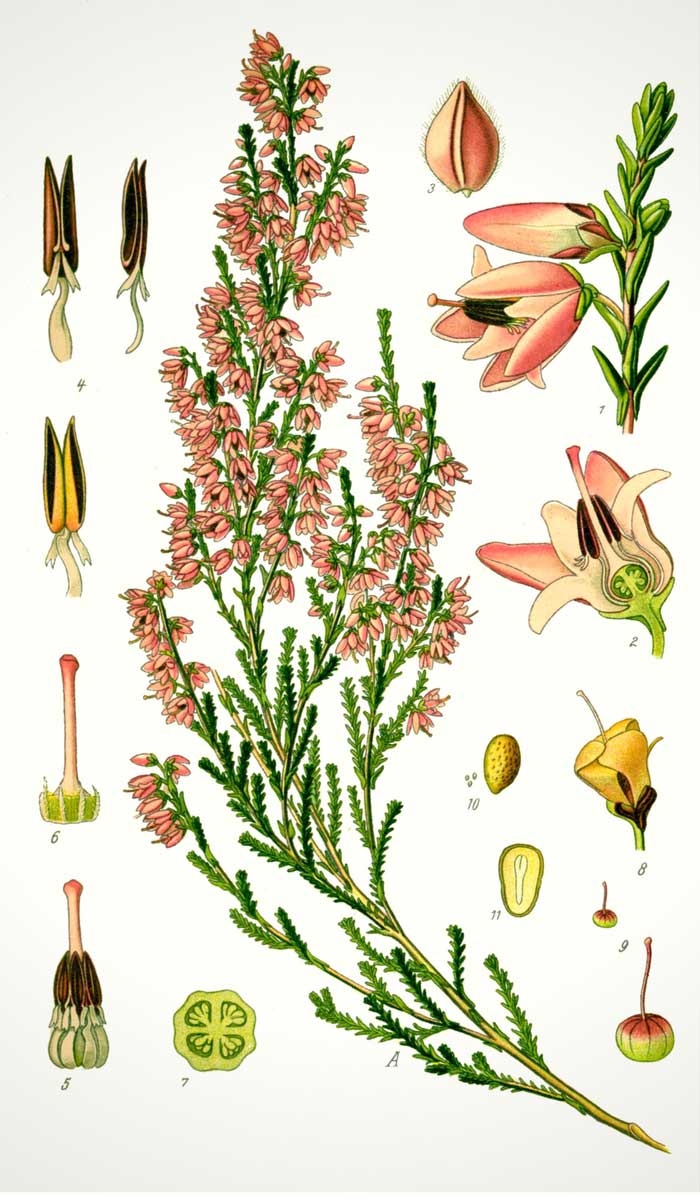
Calluna vulgaris: botanical illustration
Heathers form small shrubs or bushes with a very spreading habit. They are low, ground-covering plants. Most cultivated varieties reach a maximum height of 30 to 50 cm. However, there are arborescent heathers, such as Erica arborea, which can reach 5 metres in height.
Depending on the varieties, heathers can flower throughout the year. Common heather is a summer heather: the type species flowers from June-July until September, but there are also varieties that bloom until December. Erica heathers, on the other hand, tend to have winter flowering, blooming from October-November until March-April. As for the tree heather Erica arborea, it offers white flowers in spring… Feel free to combine different species and varieties to enjoy them all year round!
In Erica heathers, the flowers consist of four fused petals, resembling small bells (this is referred to as urceolate flowers, as seen in muscaris). The stamens sometimes extend beyond the tip of the urn. Four green sepals surround the petals. The flowers are generally grouped in clusters, sometimes in whorls or panicles. In common heathers, the flowers form small bells gathered in spikes and consist of four coloured sepals, resembling petals, slightly longer than the latter. The non-fused petals are located inside the bell formed by the sepals. Heathers possess eight stamens. Erica verticillata offers an original flowering, with very elongated and whorled flowers.
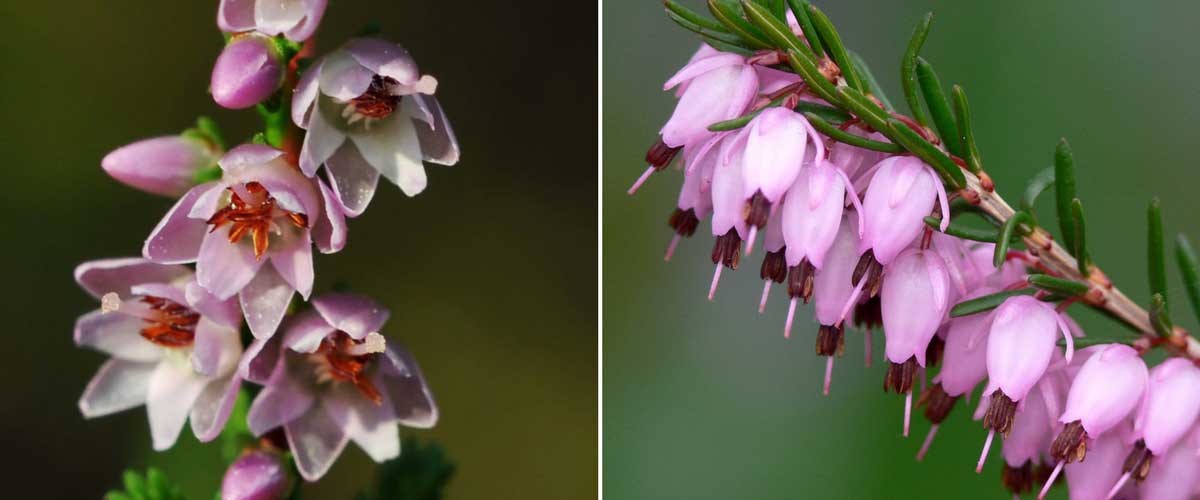
Flowers of Calluna vulgaris (photo Zeynel Cebeci) and those of Erica carnea (photo Leo Michels)
The flowers of heather range from white to deep pink, almost red, offering a whole range of subtle shades, with flowers that can also be very light pink or bright pink… And sometimes leaning towards mauve, lilac, almost violet. Erica scoparia has an original flowering, green and pink. In commerce, one can find coloured common heathers in bright tones: blue, yellow, orange, red, green, etc. This is a fine layer of paint applied to the floral bud. The plant will remain in this hue for the duration of one flowering, then it will return to its original colour when it flowers again the following year.
Heathers are good melliferous plants. Heather honey is even produced! The species with winter flowering have the advantage of providing nectar to insects at a time when there are very few flowers in the garden.
The leaves of heathers are evergreen, making the plant very decorative in winter. The leaves of Erica are linear, elongated, resembling conifer needles. They often measure less than one centimetre in length. They are whorled, often in threes or fours. They are marked with a furrow on the underside. The leaves of common heather form imbricate scales. They are opposite, elongated, thick, arranged in four ranks. They are much smaller than those of Erica.

The foliage of Calluna vulgaris (photo Stefan Lefnaer) and that of Erica carnea (photo Tomasz Nemo5576 Górny)
The leaves are often dark green, beautifully contrasting with the white or soft pink flowers. However, they can also be light green or tend towards silvery grey. The colours sometimes evolve with the seasons. The heather Erica darleyensis ‘Eva Gold’ stands out for its very bright foliage, almost yellow. In the variety ‘Spring Torch’, the new spring shoots take on a red hue.
The fruit of the heather is a small capsule with four chambers.

The capsules and seeds of Calluna vulgaris (photo Stefan Lefnaer)
The main varieties of heathers
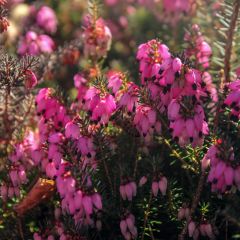
Erica carnea December Red - Winter Heath
- Height at maturity 25 cm
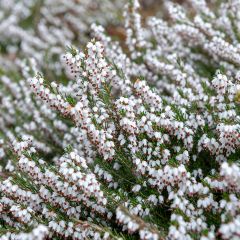
Erica carnea Springwood White - Winter Heath
- Height at maturity 25 cm
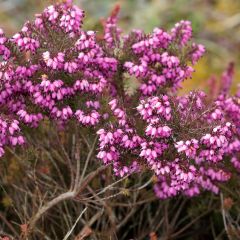
Erica darleyensis Kramers Rote - Winter Heath
- Height at maturity 35 cm
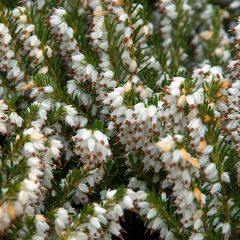
Erica darleyensis f.albiflora Silberschmelze - Winter Heath
- Height at maturity 35 cm
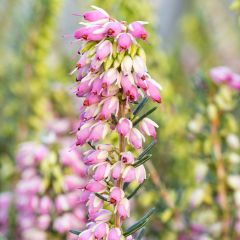
Erica darleyensis Ghost Hills - Winter Heath
- Height at maturity 40 cm
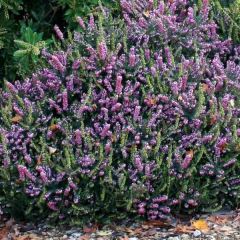
Erica darleyensis Winter Belles PhoebeWinter Heath
- Height at maturity 50 cm
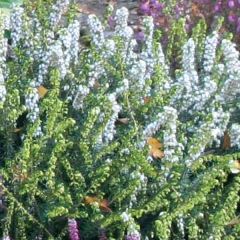
Erica darleyensis Winter Belles Katia - Winter Heath
- Height at maturity 50 cm
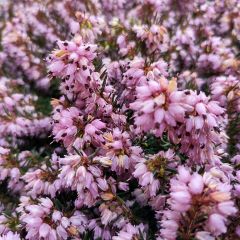
Erica darleyensis Spring Surprise - Winter Heath
- Flowering time April to June
- Height at maturity 35 cm

Calluna vulgaris Marlies - Heather
- Flowering time September to November
- Height at maturity 30 cm
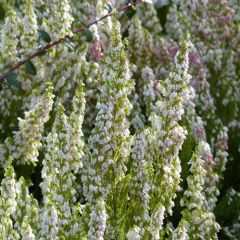
Erica arborea GREAT STAR Le Vasterival - Tree Heath
- Flowering time April to June
- Height at maturity 1,50 m
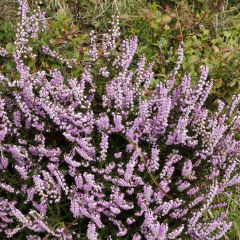
Calluna vulgaris Allegro - Heather
- Flowering time October, November
- Height at maturity 40 cm
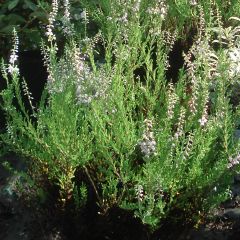
Calluna vulgaris Spring Torch - Heather
- Flowering time September to November
- Height at maturity 35 cm
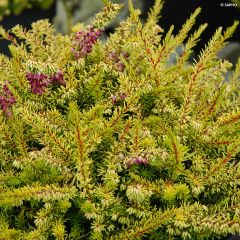
Erica darleyensis Eva Gold - Winter Heath
- Height at maturity 40 cm
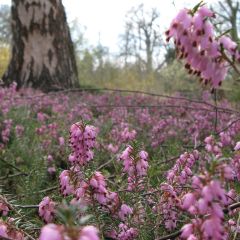
Snow heather - Erica carnea Jenny Porter
- Height at maturity 30 cm
Discover other Heathers
View all →Available in 0 sizes
Available in 0 sizes
Available in 0 sizes
Available in 1 sizes
Available in 3 sizes
Available in 2 sizes
Available in 2 sizes
Available in 3 sizes
Available in 2 sizes
Available in 1 sizes
Planting heather
Where to plant?
The ideal is to install heather in a sunny position, or possibly in partial shade. Winter heather Erica carnea can grow in the shade.
Heather tolerates poor soils. The ground must primarily be well-draining, to prevent moisture from stagnating and causing the roots to rot. Heather does very well in sandy soils! Avoid heavy, clayey soils, as they retain water… or ensure proper drainage by adding a layer of gravel or pumice in the planting hole.
Heather prefers rather acidic soils. Most of them do not tolerate lime very well. We recommend adding some heather soil during planting. Some, like Erica darleyensis, Erica carnea, or Erica vagans, can, however, grow in slightly calcareous soil.
Heather is a plant that copes well with urban pollution. It can also be planted in a seaside garden, as it withstands salt spray.
When to plant?
You can plant heather throughout the year. Just avoid periods of frost or extreme heat.
How to plant?
Maintain a distance of 30 to 50 centimetres between your plants, although this varies depending on the spread of each variety. We recommend planting them in groups, with a minimum of five or seven. They create a more beautiful effect when gathered, forming true colourful carpets in front of flower beds or at the base of bushes. Arborescent heathers can be planted individually.
- Place the root ball in a basin filled with water to moisten it.
- Dig a planting hole. You can add heather soil and draining materials (gravel, pumice…), especially if your ground is heavy.
- Place your heather in the planting hole.
- Replace the soil, then firm it down.
- Water
- We recommend mulching with pine bark.
Continue to water regularly during the first year, but without excess.
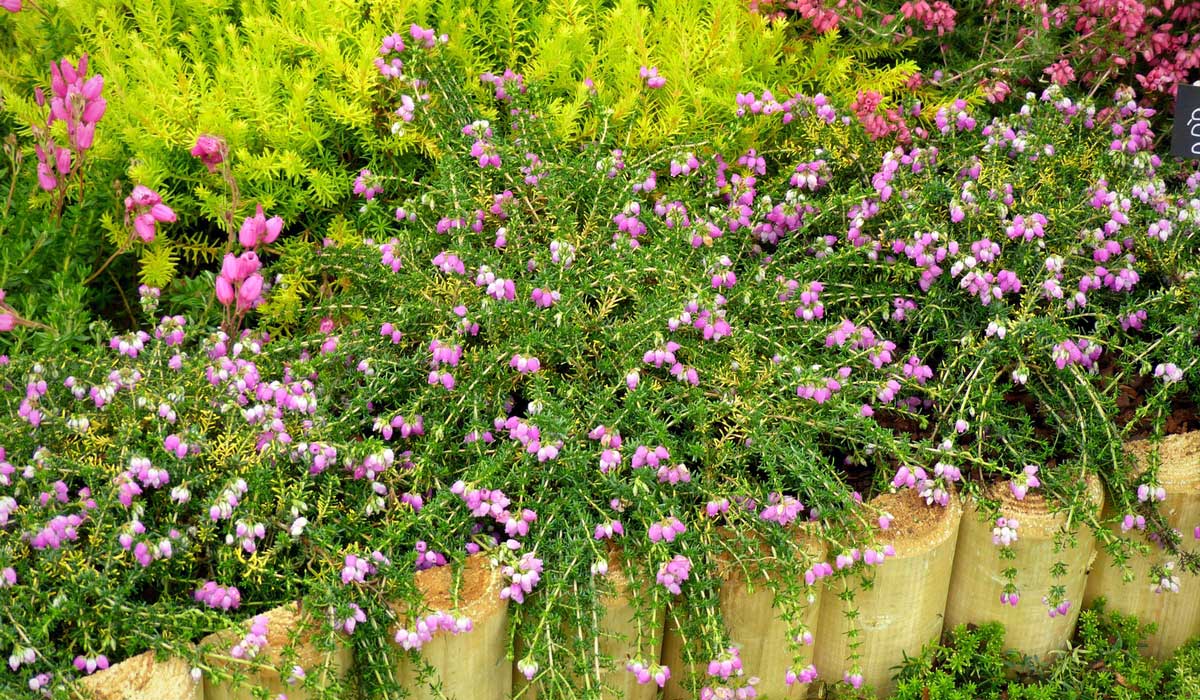
You can install heather at the edge or in the foreground of a flower bed. Here, Erica cinerea ‘Creepy Crawly’
Care
Heathers require very little maintenance. They do not need fertiliser; on the contrary, it is preferable to grow them in rather poor soil. They generally do without watering. Water them only in the year of planting, and then only in case of prolonged drought. Preferably use rainwater rather than tap water, which can sometimes be too calcareous.
Prune your heathers once flowering is finished. Shorten the young shoots with pruning shears to give the clump a nice rounded and compact shape. Avoid pruning old wood.
Heathers are resilient plants, rarely suffering from diseases. However, they can be affected by fungal diseases if grown in heavy soil that retains water, or in hot and humid conditions. Phytophthora (Phytophthora cinnamomi) can quickly kill entire shoots. They may also be affected by Rhizoctonia or Pythium… The best prevention method is to grow them in well-draining substrate. Cut and burn the affected parts to limit the development of these diseases.
To learn more, also read our article: Diseases and parasitic pests of heathers: symptoms, natural treatments and prevention tips.
Multiplication
It is possible to multiply heathers by division or by sowing, but the simplest and most effective techniques are propagation by cuttings and layering.
Layering
You can layer heather in spring. This is the best technique for multiplying heathers! They sometimes layer spontaneously when their spreading stems touch the soil.
- Choose a branch located on the outside of the clump.
- Dig a shallow trench just below the branch.
- Gently bring the branch closer to the soil to place it in the trench.
- Hold it in place with hooks. The end of the branch should be raised, standing vertically. You can use a stake.
- Cover the rest of the branch with potting soil mixed with sand.
- Water generously.
Continue to water regularly, and when the layer has taken root, you will cut the branch that connects it to the mother plant. You can then dig up the new plant and transplant it into your garden.
Propagation by cuttings
Heather can also be multiplied by propagation by cuttings in summer, around August.
- Prepare a pot by filling it with a mixture of sand, potting soil, and heather soil. Moisten the substrate.
- Take a semi-woody shoot (a shoot from the previous year) five to ten centimetres long from the variety you wish to multiply. Cut cleanly with a sharp knife just below a leaf node.
- If there are flowers, remove them. Also, remove the leaves located on the lower third of the cutting.
- Replant the cutting in the substrate.
- Firm the soil around to avoid air pockets.
- Place the pot in a bright location but out of direct sunlight.
→ Learn more in Marion’s tutorial: How to multiply heather?
Association
As heathers look their best when planted in groups, and as they offer staggered flowering throughout the year, we recommend combining different varieties! You will enjoy their blooms for longer. For example, plant summer heather, Calluna vulgaris, alongside winter heather, Erica darleyensis, and possibly add the shrubby heather Erica arborea, which flowers in spring.
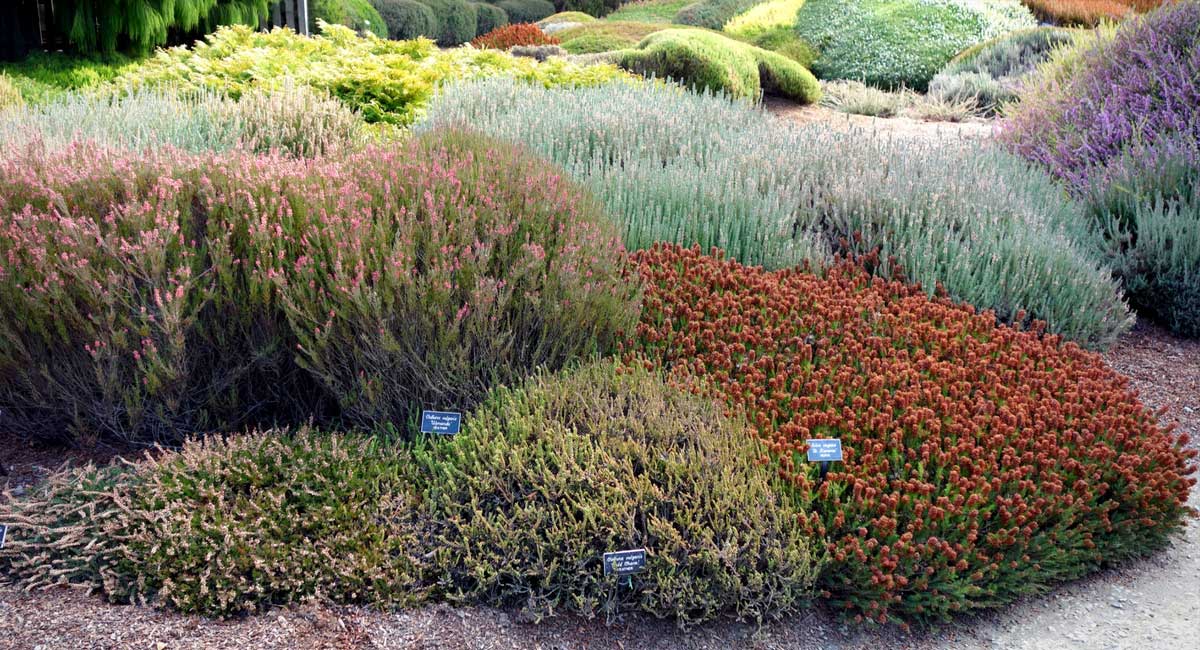
You can combine different varieties of heathers! Here, Calluna vulgaris ‘Wynanda’, Calluna vulgaris ‘Gold Charm’ and Erica vagans ‘St Keverne’
Heathers can create a low, colourful border. You can plant them along pathways, either alone or in combination with other perennials… Or plant them at the front of a flowerbed, in front of other plants. Due to their often low and stout size, you can pair them with grasses to add lightness, and especially with shrubs for height. Also, take advantage of the decorative foliage of ferns! Planted as ground cover at the base of trees or shrubs, heathers will limit the growth of weeds while adding a splash of colour. You can plant them with conifers: their needle-like, evergreen foliage will easily complement that of the heathers.
Of course, they naturally find their place with other ericaceous plants. You can position them in the foreground, as ground cover, just in front of shrubs such as rhododendrons, Pieris, or Camellias. For a beautiful winter scene, combine darleyensis heathers with the delicate, fragrant blooms of daphne. Also discover Skimmia japonica, which offers lovely spring blooms and fruits in autumn and winter.
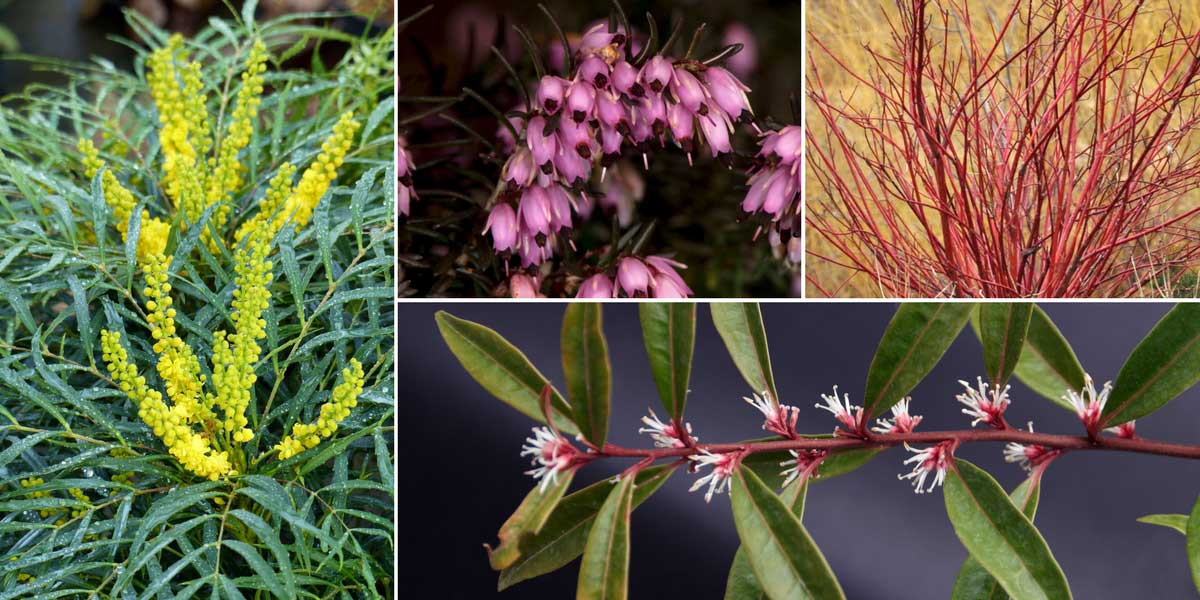
Combine winter heathers with other winter-flowering plants and the decorative wood of dogwoods. Here, Mahonia ‘Soft Caress’, Erica x darleyensis ‘Furzey’ (NY Botanical), Cornus sericea ‘Baileyi’, and Sarcococca hookeriana ‘Wouters’ (photo Hagens)
As heathers are small, ground-covering plants that prefer well-drained soil and sunlight, they are perfect for integrating into a rockery. Place them alongside sedums, saxifrages, grasses, or small bulbous plants like Iris reticulata. You can add some conifers to structure and add volume. For example, plant summer heather, Calluna vulgaris, with sedum reflexum ‘Angelina’.
Combine winter heathers, such as Erica darleyensis or Erica carnea, with winter-flowering plants: Oriental hellebores, Cyclamen coum, snowdrops, iris reticulata, liverwort… And with shrubs like Mahonia, Sarcococca, Grevillea, and Japanese Skimmia… Enjoy the fragrant blooms of edgeworthias, winter jasmine, or Viburnum bodnantense ’Dawn’! You can also pair your winter heathers with the decorative wood of dogwoods, particularly Cornus sanguinea.
Heathers can easily be included in a planter that you might place on a windowsill. Plant them with carex, ivy, cyclamens, and possibly add a few small bulbous plants.
→ More ideas for combining winter heathers in our advice sheet.
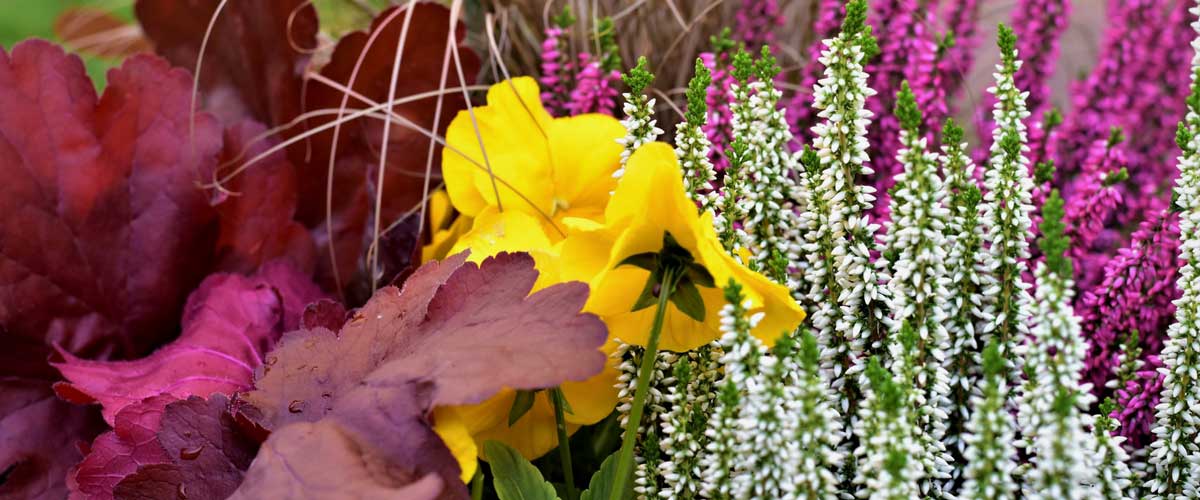
Heathers, Pansies, and Heucheras: an ideal combination for pots or planters
Did you know?
- Medicinal properties
Heather, Calluna vulgaris, is a medicinal plant with diuretic, anti-inflammatory, and antiseptic properties. It can be used in decoction or infusion. It is employed against cystitis, rheumatism, colic, and stomach pains. It is sometimes sold in capsule form. You can harvest the flower clusters before they bloom, when they are still in bud. Dry them and store them in a dark place away from moisture. Heather honey also has medicinal properties.
- Various uses
The branches of heather were once used to make brooms. This is what gives Erica scoparia its vernacular name of Broom Heather. Its branches, which are easily flammable, have also sometimes been used as kindling. Heather has also been used to make fences, roofing, ropes, and baskets. Its wood has been employed in carving and turning, for the creation of small objects.
Heather is a dye plant: when used in decoction, its flowering tops can dye fabrics yellow.
- Heather soil
True heather soil is an acidic substrate resulting from the decomposition of plants such as heathers and gorses. It is found naturally in sandy heaths, on a siliceous subsoil. Today, the substrate sold as “heather soil” consists of ground pine bark, sand, compost, turf, and fertiliser, but no longer comes from the decomposition of heathers. Its qualities (notably acidity and drainage) are similar to those of true heather soil.
Useful resources
- Our range of heathers!
- An article by Pierre on our blog – Discover the new heathers “Winter Belles”!
- An article by Pascal on our blog – Flower your garden in winter
- An article by Virginie on our blog – 5 heathers in pots: my little collection
- Heathers by use or by colour: the 4 most beautiful white winter heather varieties, the 5 most beautiful pink heathers, Summer heather: the most beautiful varieties; 7 evergreen winter heathers to plant as ground cover
- Discover 9 creeping bushes
- Our advice sheet: How to choose a heather;
- Our advice sheet: How to grow a heather in a pot?
- Our tutorial: How to multiply heather?
- Our advice sheet: How to grow a bushy heather
- Discover the heathers and the new arrivals for 2023
Frequently asked questions
-
Can I still grow heathers in my calcareous soil?
Although the majority of them prefer rather acidic soils, winter heathers Erica x darleyensis and Erica carnea can tolerate slightly calcareous ground. This is also true for the wandering heather, Erica vagans, which blooms in summer. You can test the soil pH with a soil analysis kit sold at garden centres, or by pouring a few drops of vinegar onto the soil: an effervescent reaction occurs if the ground is calcareous. You can slightly correct the pH by adding well-decomposed compost, heather soil, sulphur, or pine bark. It is also possible to dig a pit, place a geotextile in it, and then fill it with garden soil mixed with heather soil... But it is preferable to grow plants suited to your ground!
-
My heather is suddenly dying!
If your heather is wilting and suddenly drying out for no apparent reason, it may be affected by phytophthora (Phytophthora cinnamomi). This is a fungal disease that causes the roots to rot and is favoured by excess moisture. There is no treatment available, only preventive measures, which mainly involve improving drainage. Remove the plant and avoid replanting another plant from the same family (Ericaceae), such as rhododendrons, or a conifer in that location, as they are also susceptible to phytophthora.
- Subscribe!
- Contents































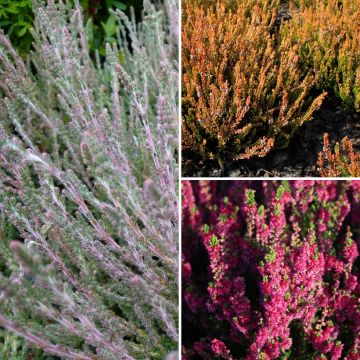
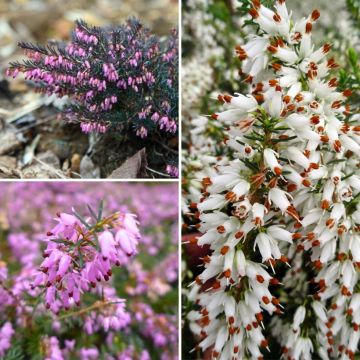
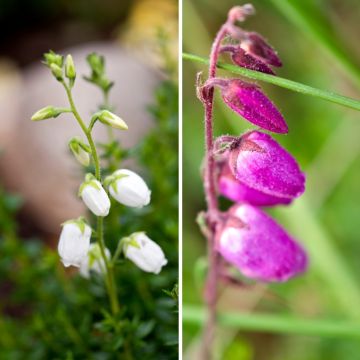
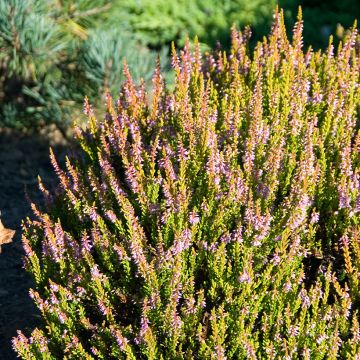


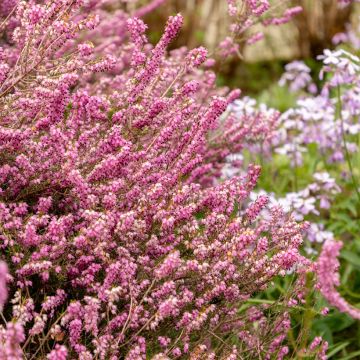
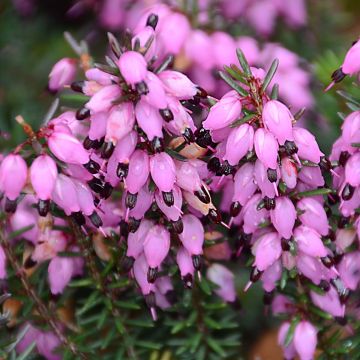

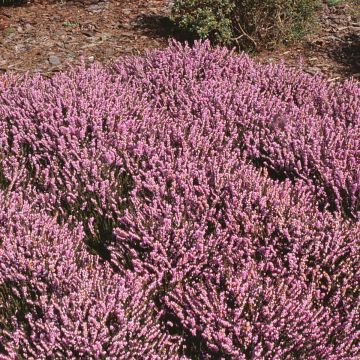
Comments